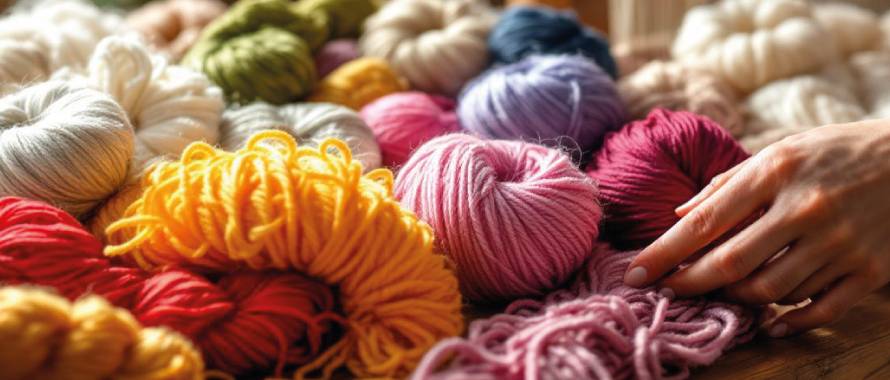The fashion industry is at a turning point, with sustainability no longer a trend but a necessity. Overtime, the demand for eco-friendly practices, ethical sourcing, and technological advancements in textiles is shaping the future of fashion. From bio-based fabrics to AI-driven supply chains, sustainability is redefining how brands produce and consumers purchase clothing.
In this blog, we explore the top sustainable fashion trends for the future, and how textile innovations are paving the way for a greener future.
1. Bio-Based and Regenerative Fabrics
One of the biggest sustainable fashion trends of the future is the rise of bio-based and regenerative fabrics. These materials are sourced from renewable resources and are designed to have minimal impact on the environment.
- Mushroom Leather (Mycelium Leather): A cruelty-free and biodegradable alternative to animal leather. Brands like Stella McCartney and Adidas are already investing in mycelium-based materials.
- Seaweed Fiber: A natural, biodegradable fiber derived from seaweed, requiring no pesticides or fresh water to grow.
- Regenerative Cotton: Unlike conventional cotton, regenerative cotton improves soil health, increases biodiversity, and captures carbon dioxide, making it a climate-positive material.
Bio-based fabrics offer a circular approach to fashion, ensuring that textiles can be reused, composted, or safely returned to nature without harming the planet.
2. AI and Blockchain for Sustainable Supply Chains
Consumers are demanding transparency in fashion, and technology is playing a major role in ensuring brands are held accountable. In the future, AI-driven supply chains and blockchain technology will make ethical sourcing more accessible.
- AI-Powered Demand Forecasting: Helps brands reduce overproduction and waste by predicting fashion trends and optimizing inventory.
- Blockchain for Traceability: Ensures end-to-end transparency, allowing consumers to track a product’s journey from raw material to final garment.
- Digital Product Passports (DPP): QR codes or NFC chips embedded in clothing to provide real-time information on a garment’s sustainability, care instructions, and end-of-life options.
AI and blockchain will reduce waste, increase supply chain efficiency, and empower consumers to make informed ethical choices.
3. Waterless and Plant-Based Dyeing Technologies
Textile dyeing is one of the most polluting processes in fashion, using trillions of liters of water annually. In the future, sustainable dyeing innovations will revolutionize the industry.
- Bacterial and Algae-Based Dyes: These living dyes are created through fermentation, eliminating the need for toxic chemicals.
- Air Dyeing Technology: Uses no water and significantly reduces energy consumption. Brands like Nike and Patagonia are already adopting this method.
- Color-Changing Fabrics: Scientists are developing bio-responsive textiles that shift color with temperature, UV exposure, or moisture, reducing the need for excess dyeing.
These innovations will drastically reduce water waste, chemical pollution, and carbon emissions, making fashion more environmentally friendly.
4. Recycled and Upcycled Fashion
The circular economy is a key focus for sustainable fashion trends. More brands are embracing recycling and upcycling, using waste as a resource to create new textiles.
- Textile-to-Textile Recycling: Innovative processes that break down old garments into new fiber without losing quality.
- Deadstock Fabric Repurposing: Luxury brands and independent designers are using excess fabric from previous collections instead of producing new materials.
- Upcycled Fashion: Creative reuse of old clothing, turning them into unique, high-value fashion pieces.
Recycling and upcycling divert textile waste from landfills, reduce demand for virgin materials, and lower the carbon footprint of fashion.
5. Digital Fashion and Virtual Clothing
As technology advances, fashion is extending into the digital realm, reducing the need for physical production. In the future, digital fashion will become more mainstream, reducing textile waste.
- Virtual Try-Ons: AI-powered apps let consumers try clothes digitally before purchasing, cutting down on returns and waste.
- NFT and Digital Fashion Collectibles: High-end fashion brands are launching wearable NFTs, allowing users to own designer pieces in the digital world.
- Augmented Reality (AR) Fashion Shows: Brands are shifting towards virtual presentations to reduce travel emissions and textile waste from traditional runway shows.
Digital fashion reduces the need for mass production, excess inventory, and textile waste, offering a sustainable alternative for trend-driven fashion.
6. Slow Fashion and Localized Production
The shift away from fast fashion continues to grow in the coming days, with more brands adopting slow fashion principles and localized production.
- Made-to-Order and Customization: Brands are producing only what is needed, reducing inventory waste.
- Local and Ethical Manufacturing: Moving away from globalized production to smaller, regional supply chains to cut transportation emissions.
- Timeless, Minimalist Designs: Fashion is becoming more seasonless, focusing on quality over quantity to encourage longer garment lifespans.
Slow fashion reduces overproduction, supports ethical labor practices, and promotes a conscious consumer mindset.
The sustainable fashion trends for 2025 are all about circularity, innovation, and transparency. From bio-based materials to digital fashion and AI-driven supply chains, the future of textiles is eco-conscious and technology-driven. As a fabric sourcing company, staying ahead of these trends will help you offer cutting-edge sustainable materials that align with the industry’s evolving needs.




